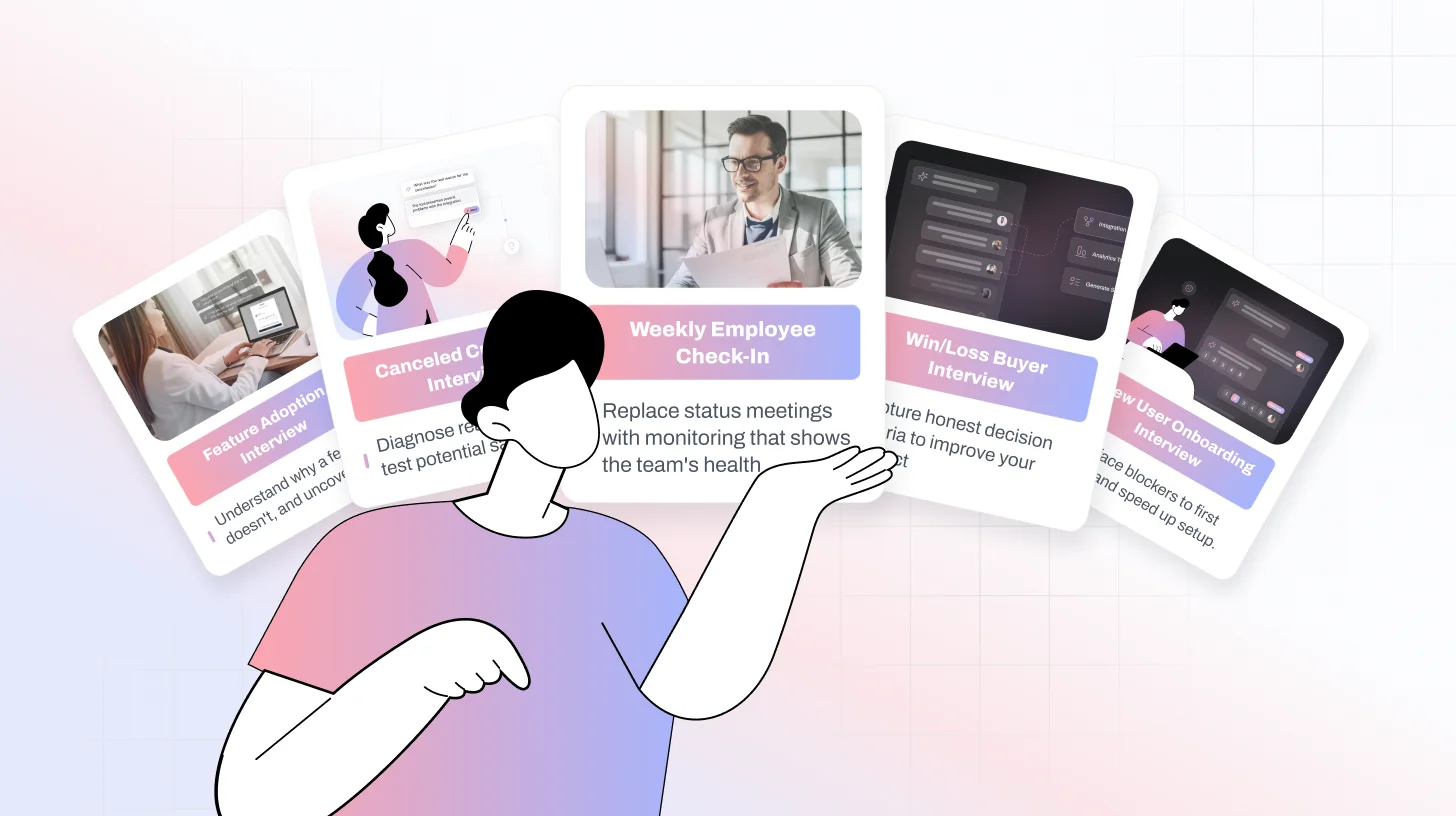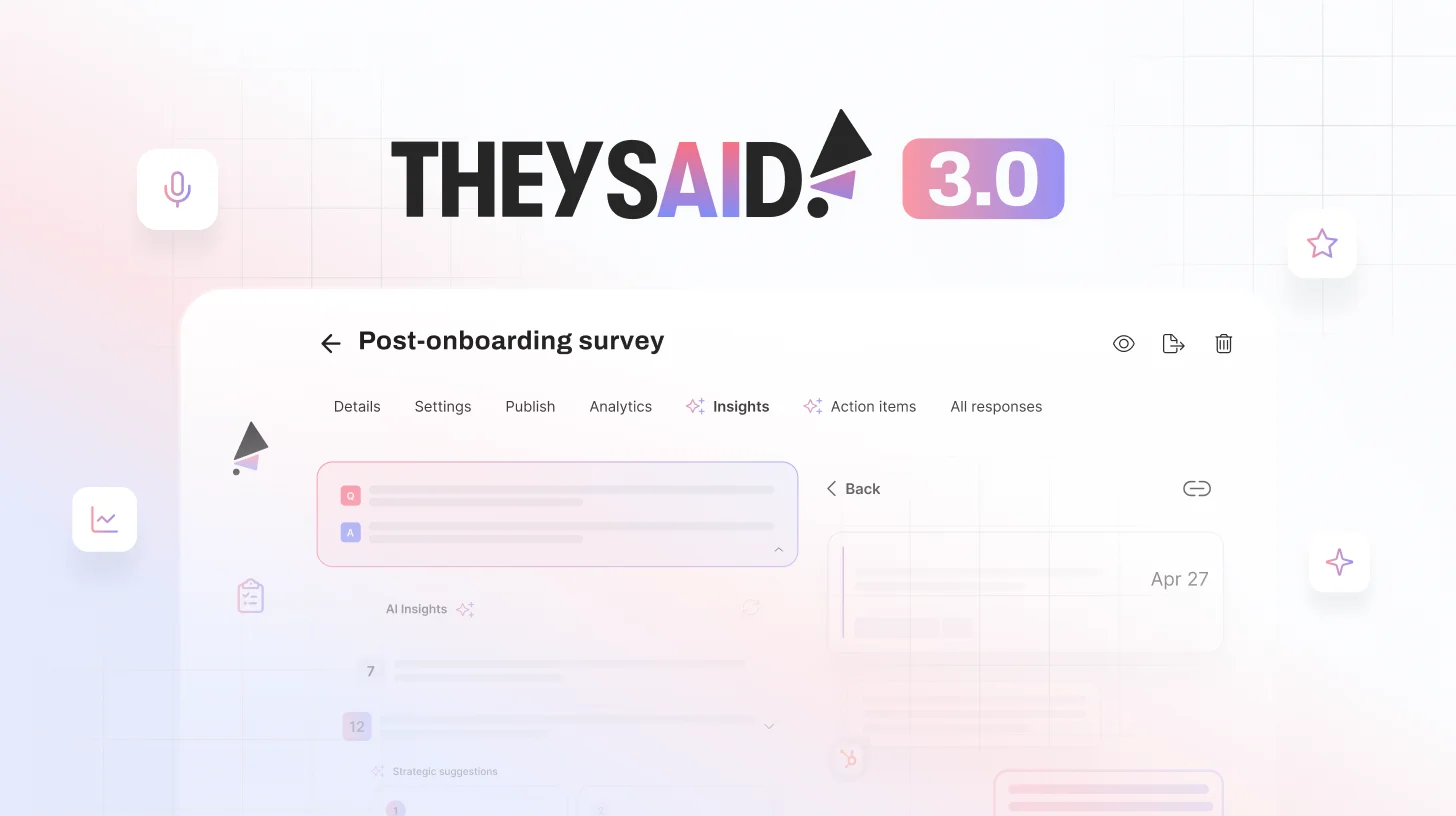 Blog
Blog How to Conduct an Effective Onboarding Feedback Survey
How to Conduct an Effective Onboarding Feedback SurveyHow to Conduct an Effective Onboarding Feedback Survey

First Impressions Count—Big Time When Onboarding New Employees!
New employees want to feel welcome, prepared, and valued. But too often, onboarding feels rushed, unclear, or overwhelming. And when onboarding fails, employee retention suffers.
The solution? Onboarding feedback surveys. By asking the right questions and acting on the responses, companies can turn onboarding into a seamless, positive experience. Here’s how to do it!
What Is Employee Onboarding and Why It Matters
Employee onboarding is a process of welcoming new hires and equipping them with all the necessary guidelines and tools to integrate into the company. It begins with administrative tasks and orientation, followed by training sessions and team introductions to help them become familiar with work and people. A strong onboarding experience makes employees feel confident and engaged, while poor onboarding can leave them confused and disconnected.
What Is an Onboarding Feedback Survey?
An onboarding feedback survey is a tool companies use to gather employee onboarding feedback from new hires. It’s a simple way to find out how clear their first days were, whether training and orientation worked, and how welcome they felt.
These surveys help HR teams and managers answer questions like:
- Did the new hire understand their role and responsibilities?
- Was the orientation clear and helpful?
- Did they feel supported by their team?
- Are there parts of onboarding that need improvement?
Recommended Read: How to Run an Employee Onboarding Survey and Get Meaningful Insights
Did you know?
69 percent of employees are more likely to stay with a company for three years if they experienced great onboarding.
Different Types of Onboarding Feedback Surveys
Read - 50+ Best Employee Onboarding Survey Questions to Ask New Hires
Best Practices for Employee Onboarding Feedback Surveys to Improve Retention
.webp)
Let’s break down some actionable practices for employee onboarding feedback surveys that will help you improve your onboarding process.
Make Feedback Feel Like a Conversation
Most onboarding feedback surveys are dull and static, leaving little room for honest opinions. Instead of asking multiple-choice questions, use an open-ended question to make it conversational and engaging.
For example, you can ask Questions like, "If you had to describe your first week of onboarding to a friend, how would you do that?"
Send Multiple Surveys at Key Milestones
Employees’ opinions evolve over time, so sending only one onboarding survey is not enough. Set a calendar with a realistic timeline to provide ongoing support to new hires.
The best timeline for onboarding surveys is after 30, 60, and 90 days, or you can customize your timeline according to your organization's needs.
Quick Fact: Companies with effective onboarding see up to 82% higher new-hire retention. Source
Use “Expectation vs. Reality” Insights
New hires come with certain expectations about their job role, team, and workplace. Measuring gaps between what was promised and what was delivered in your onboarding feedback survey will help improve the employee onboarding experience. Add a question to your survey like:
“How well did the onboarding experience match your expectations?”
This shows you exactly where to improve your onboarding process for future new hires.
Make It Anonymous But Keep It Personal
Some employees might hold back from honest feedback because of fear of judgment. Offering anonymous onboarding survey responses can help you get candid and constructive feedback. However, to keep it personal, include an optional field for employees to reveal their identity if they need additional support.
Don’t Just Focus On The Negatives, Celebrate The Small Wins
Most companies use onboarding feedback surveys to find problems, but you should also ask questions such as:
“What’s your favorite part of the onboarding process?”
This identifies what’s working best. Recognizing positive experiences helps refine what to keep and expand in your new hire onboarding feedback survey.
Test Your Survey Before Going Live
Always test your survey with HR staff or employees who have recently completed onboarding to identify any issues that can lead to confusing responses or no responses at all
What to check in a pilot survey:
- Are the questions easy to understand?
- Do they encourage honest feedback?
- Is there a good balance between different question types?
Track Employee Experience with KPIs
Collecting feedback data is simply not enough; you need to analyze it and measure key employee experience metrics to understand the effectiveness of onboarding feedback surveys. Two important KPI’s are
Employee Retention Rate – How many new hires stay beyond their first 6-12 months?
Employee Net Promoter Score (eNPS) – Would new hires recommend your company to others?
By measuring these KPI’s, you can monitor trends and see if onboarding improvements lead to productivity, better retention, and satisfaction.
Close the Loop & Follow Up
Your company isn’t static, and neither should your onboarding process be! As your team grows, their roles shift. Your onboarding survey should also evolve to cater to the employees' unique needs.
Here’s how to continuously improve your survey
- Rotate and refresh your questions according to the onboarding updates.
- Personalise your onboarding survey for each role to get better insights.
- Try pulse surveys, one-on-one interviews, or even anonymous feedback channels to capture honest insights.
Also Read: 50+ Best Employee Onboarding Survey Questions to Ask New Hires

Step-by-Step: Create an Onboarding Survey with TheySaid
TheySaid is not just another survey tool; it’s the world’s first conversation AI survey platform that can make your onboarding feedback survey interactive, engaging, and insightful.
1. AI-Generated Surveys in One Click
Writing a survey from scratch is difficult. With TheySaid, you don’t have to spend hours writing them; instead, you just have to enter the URL of your website, and AI will automatically learn about your business and generate questions for you instantly, which you can customize as well. You can also import existing surveys or teach the AI about specific workflows, forms, and processes, making it fully tailored to your organization.
2. Conversational AI for Deeper Insights
TheySaid provides rich and qualitative insights by digging deeper into the answers by AI conversations. For example, if a new hire rates training as confusing, AI will follow up with, "What specifically did you find confusing? to understand the why behind the response.
3. Smart AI Analysis
Traditional surveys dump a pile of responses on your desk, leaving you to figure things out on your own. TheySaid detects patterns, summarizes trends, and provides actionable plans so you know where exactly to make improvements.
4. Easy Distribution of Survey
TheySaid lets you send surveys via email, Slack, in-app messages, or QR codes, ensuring they reach people where they’re most active. It also integrates with all major HR and workplace tools, ensuring surveys reach employees wherever they are and syncing feedback data with your existing systems.
5. Instant Action Items & Alerts
Collecting feedback is pointless if you don’t act on it. TheySaid’s AI identifies key takeaways and alerts you to critical issues in real time. If multiple employees complain about a complicated training process, you’ll know immediately and can fix it fast.
Try TheySaid today and get insights that actually drive change!

Key Takeaways
- Onboarding feedback surveys are crucial for understanding new hires’ experiences and improving the process.
- To get a complete picture, use multiple surveys at key milestones.
- Make surveys conversational and engaging by using open-ended questions and AI-powered follow-ups.
- Track key metrics like retention rate and eNPS to measure the long-term impact of onboarding improvements.
- Act on feedback quickly. Don’t just collect data; analyze it and implement changes.
- TheySaid revolutionizes surveys with AI-generated questions, conversational insights, and automated analysis to drive real results.
Conclusion
A solid onboarding process gives new hires the clarity and support they need to succeed. When you use onboarding feedback surveys, you see exactly what parts of the employee onboarding experience work well and where new employees feel lost. These insights help you fix gaps quickly, improve training, and create a smoother first few weeks.
Even small improvements in onboarding processes can raise employee engagement, boost confidence, and reduce early turnover. The more you listen to new hires and act on their feedback, the stronger your overall employee experience becomes and that leads to better retention and better performance across the company.
FAQs
What is an onboarding feedback survey?
An onboarding feedback survey is an HR tool used to measure the satisfaction and engagement of new hires. By gathering feedback directly from them, the HR team optimizes its investment in hiring and training new employees.
Why do we need an onboarding feedback survey?
Using onboarding feedback HR team and manager can make necessary improvements to enhance the onboarding experience for new hires.
When should we send onboarding surveys?
Not just once! The best times are:
- Before their first day (pre-onboarding)
- Right after orientation
- 30, 60, and 90 days in
- If they leave early (exit survey)
How does TheySaid make onboarding surveys better?
TheySaid does the hard work for you. It creates AI-powered, conversational surveys, follows up on vague responses to get deeper insights, and provides smart analysis so you know exactly where to improve without drowning in data.
What are the 5 C’s of effective onboarding?
- Compliance
- Clarification
- Culture
- Connection
- Check-Ins
















.svg)